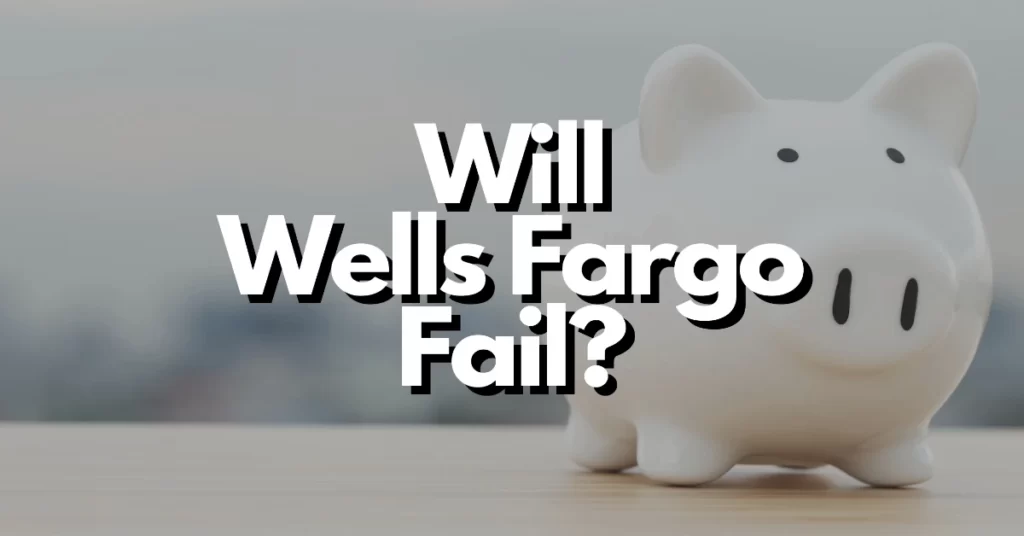Wells Fargo & Co., often touted as one of the “Big Four” banks in the United States, has a long and storied history. Founded during the California Gold Rush in 1852, the bank has weathered financial storms, economic downturns, and even a major scandal in recent years. But as with any financial institution, the question of its stability looms large in the minds of consumers and investors alike. Can Wells Fargo bank fail?
In this article, we will delve into the complexities of predicting the future of a financial giant.
Understanding the Factors
Predicting the failure of a bank as massive and deeply entrenched as Wells Fargo requires a nuanced analysis of various factors. Several key components come into play when assessing the bank’s financial health:
1. Financial Statements
One of the first indicators to scrutinize is the bank’s financial statements. These documents provide insights into the bank’s profitability, liquidity, and solvency. Key metrics such as the capital adequacy ratio, net interest margin, and non-performing loan ratio offer critical insights into the bank’s stability.
2. Regulatory Oversight
Banks operate under strict regulatory supervision, and agencies like the Federal Reserve and the Office of the Comptroller of the Currency (OCC) regularly assess their health. Monitoring regulatory actions and reports can reveal the degree of scrutiny a bank is under.
3. Market Sentiment
The stock market often serves as an early warning system for financial institutions. A plummeting stock price, coupled with increased volatility, may signal trouble. Market sentiment, reflected in share prices and trading volumes, can provide valuable clues.
4. Economic Indicators
The broader economic landscape plays a pivotal role in a bank’s fortunes. Economic factors like GDP growth, unemployment rates, and interest rate trends can impact a bank’s ability to generate revenue and manage risk.
5. Reputation and Public Trust
In the age of social media and instantaneous news coverage, public trust and reputation are vital. Scandals and controversies can erode customer confidence and lead to a loss of deposits.
Wells Fargo’s Recent History
Before we delve into predicting the future, it’s crucial to examine Wells Fargo’s recent past. In 2016, the bank faced a massive scandal involving the creation of unauthorized customer accounts. This scandal resulted in substantial fines and a tarnished reputation. However, Wells Fargo took steps to address the issue, including changes in leadership and a commitment to rebuilding trust.
Predictive Models
Financial analysts employ various models to predict the stability of banks. One such model is the CAMELS rating system, used by bank regulators to evaluate financial institutions. CAMELS stands for:
- Capital Adequacy
- Asset Quality
- Management Quality
- Earnings
- Liquidity
- Sensitivity to Market Risk
Each of these factors is assessed and assigned a rating, with “1” being the highest and “5” indicating significant concerns. Banks with consistently high ratings across these categories are considered more stable.
The Impact of Regulation
Regulation plays a crucial role in maintaining the stability of financial institutions. Wells Fargo is subject to stringent oversight from several regulatory bodies, including the Federal Reserve, OCC, and Consumer Financial Protection Bureau (CFPB). These agencies actively monitor the bank’s operations, compliance, and financial health. Any signs of instability would likely trigger regulatory intervention.
Market Reactions
As previously mentioned, the stock market can provide early indications of a bank’s health. A sharp decline in Wells Fargo’s stock price, especially if accompanied by negative news or reports, could suggest investor concerns. Additionally, a significant withdrawal of deposits by institutional investors or large customers may indicate a loss of confidence.
Economic Climate
The broader economic environment can exert significant pressure on banks. Economic downturns can lead to increased loan defaults, reduced lending activity, and lower profitability. Conversely, a strong economy can bolster a bank’s financial health.
Public Trust and Reputation
Reputation is paramount in the banking industry. Banks rely on customer deposits and investor confidence to operate effectively. Any erosion of public trust can have cascading effects, potentially leading to a loss of deposits and revenue.
The Bottom Line
So, can Wells Fargo bank fail? While it’s impossible to predict the future with absolute certainty, the available data and indicators suggest that Wells Fargo, like any financial institution, faces a complex web of factors that influence its stability.
At present, Wells Fargo appears to be actively addressing the issues that led to its previous scandal. Regulatory oversight remains vigilant, and the bank’s financial statements show signs of recovery. However, the banking industry is inherently dynamic, subject to economic cycles, market sentiment, and unforeseen events.
As a consumer or investor, it’s essential to stay informed about the banking industry’s landscape and Wells Fargo’s financial health. Keep an eye on regulatory reports, economic indicators, and market sentiment. Diversifying your financial assets and maintaining a healthy level of due diligence can help you navigate the ever-changing financial world. Ultimately, whether or not Wells Fargo can fail is a question that hinges on the interplay of numerous variables and circumstances.

